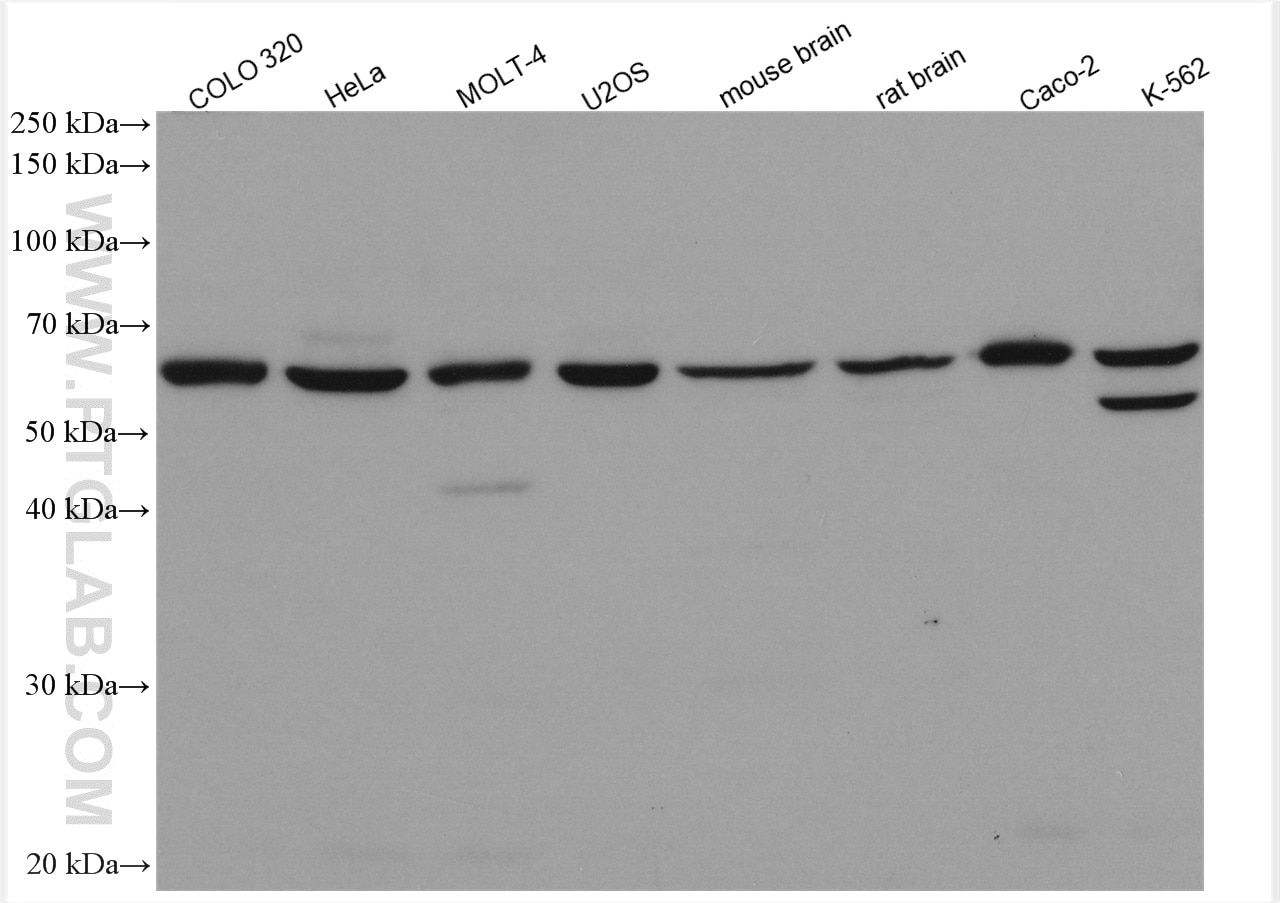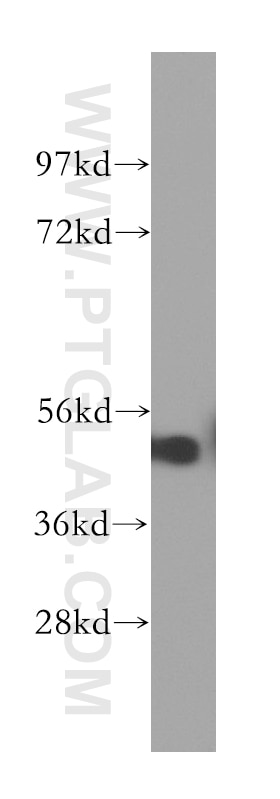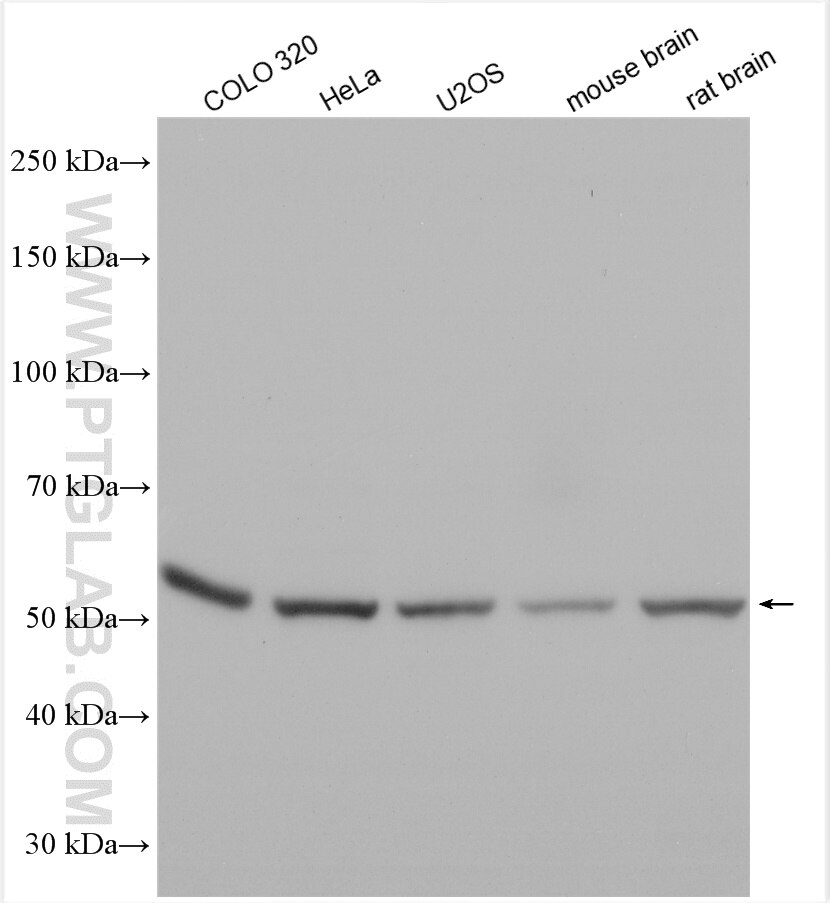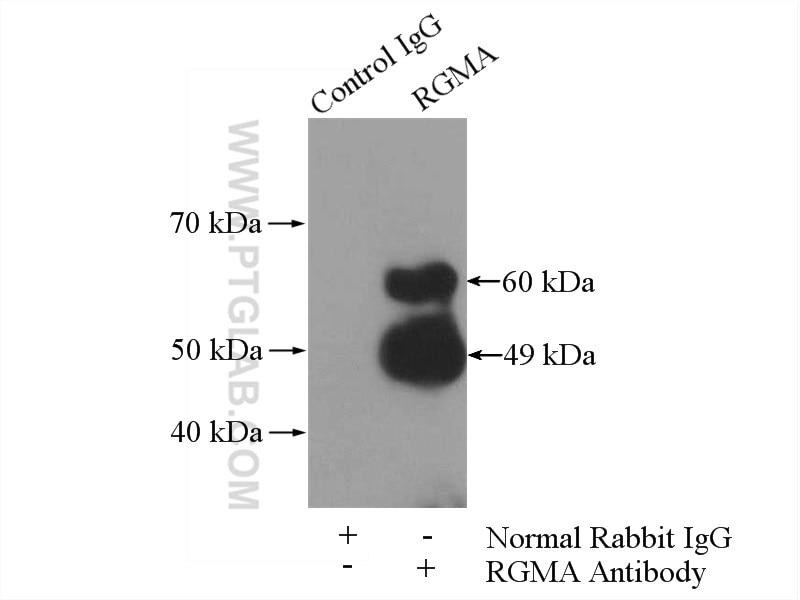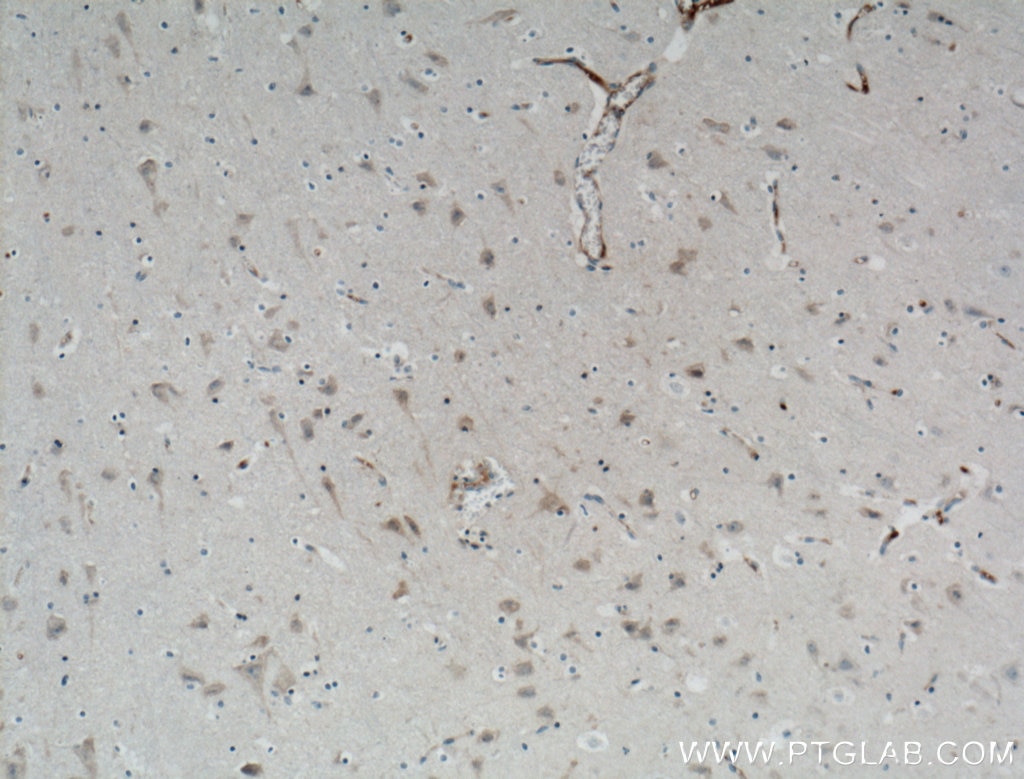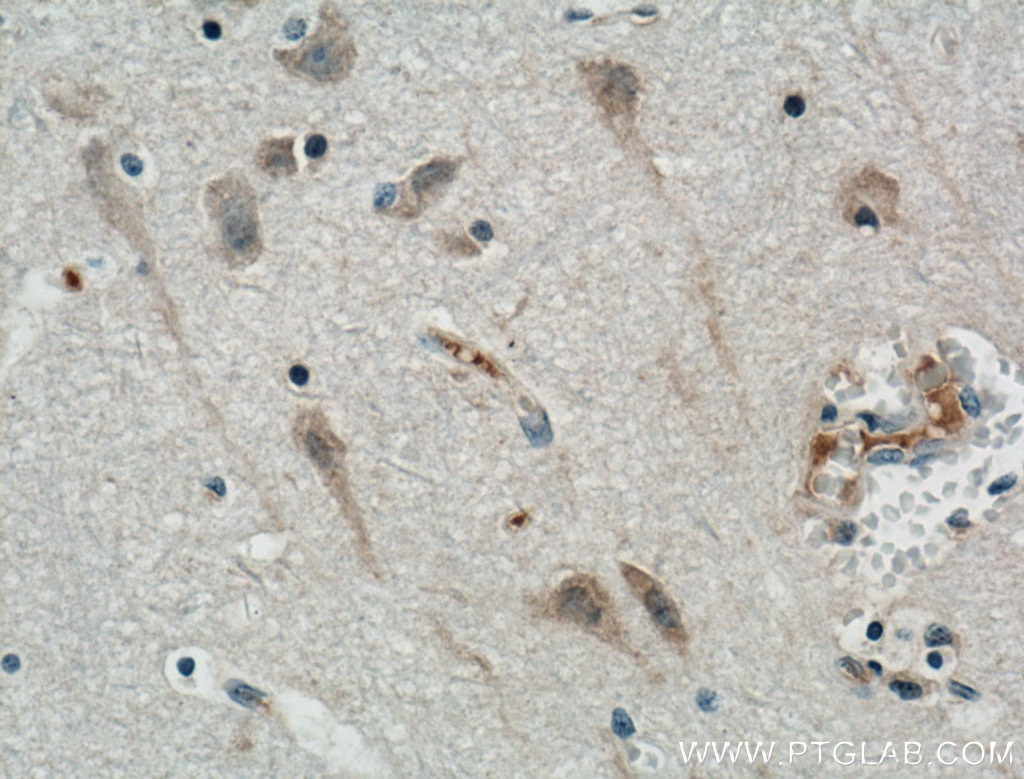- Phare
- Validé par KD/KO
Anticorps Polyclonal de lapin anti-RGMA
RGMA Polyclonal Antibody for WB, IP, IHC, ELISA
Hôte / Isotype
Lapin / IgG
Réactivité testée
Humain, rat, souris
Applications
WB, IP, IHC, CoIP, ELISA
Conjugaison
Non conjugué
N° de cat : 12387-1-AP
Synonymes
Galerie de données de validation
Applications testées
| Résultats positifs en WB | cellules COLO 320, cellules Caco-2, cellules HeLa, cellules K-562, cellules MOLT-4, cellules U2OS, tissu cérébral de rat, tissu cérébral de souris, tissu testiculaire de souris |
| Résultats positifs en IP | tissu testiculaire de souris |
| Résultats positifs en IHC | tissu cérébral humain, il est suggéré de démasquer l'antigène avec un tampon de TE buffer pH 9.0; (*) À défaut, 'le démasquage de l'antigène peut être 'effectué avec un tampon citrate pH 6,0. |
Dilution recommandée
| Application | Dilution |
|---|---|
| Western Blot (WB) | WB : 1:500-1:1000 |
| Immunoprécipitation (IP) | IP : 0.5-4.0 ug for 1.0-3.0 mg of total protein lysate |
| Immunohistochimie (IHC) | IHC : 1:50-1:500 |
| It is recommended that this reagent should be titrated in each testing system to obtain optimal results. | |
| Sample-dependent, check data in validation data gallery | |
Applications publiées
| KD/KO | See 1 publications below |
| WB | See 1 publications below |
| CoIP | See 1 publications below |
Informations sur le produit
12387-1-AP cible RGMA dans les applications de WB, IP, IHC, CoIP, ELISA et montre une réactivité avec des échantillons Humain, rat, souris
| Réactivité | Humain, rat, souris |
| Réactivité citée | rat, souris |
| Hôte / Isotype | Lapin / IgG |
| Clonalité | Polyclonal |
| Type | Anticorps |
| Immunogène | RGMA Protéine recombinante Ag3058 |
| Nom complet | RGM domain family, member A |
| Masse moléculaire calculée | 450 aa, 49 kDa |
| Poids moléculaire observé | 49 kDa |
| Numéro d’acquisition GenBank | BC015886 |
| Symbole du gène | RGMA |
| Identification du gène (NCBI) | 56963 |
| Conjugaison | Non conjugué |
| Forme | Liquide |
| Méthode de purification | Purification par affinité contre l'antigène |
| Tampon de stockage | PBS with 0.02% sodium azide and 50% glycerol |
| Conditions de stockage | Stocker à -20°C. Stable pendant un an après l'expédition. L'aliquotage n'est pas nécessaire pour le stockage à -20oC Les 20ul contiennent 0,1% de BSA. |
Informations générales
RGMA, also named as RGM, is a member of the repulsive guidance molecule (RGM) family that performs several functions in the developing and adult nervous system. It regulates cephalic neural tube closure, inhibits neurite outgrowth and cortical neuron branching, and the formation of mature synapses. RGMA binding to its receptor NEO1/neogenin induces activation of RHOA-ROCK1/Rho-kinase signaling pathway through UNC5B-ARHGEF12/LARG-PTK2 cascade, leading to collapse of the neuronal growth cone and neurite outgrowth inhibition. Furthermore, RGMA binding to NEO1/neogenin leads to HRAS inactivation by influencing HRAS1-PTK2-AKT1 pathway. It also functions as a bone morphogenetic protein (BMP) coreceptor that may signal through SMAD1, SMAD5, and SMAD8. RGMA is a molecular target for neuroprotection in retinal pathologies(PMID: 20457227). the frequent genetic and epigenetic inactivation of RGMA in CRCs and adenomas along with its in vitro function collectively support its role as a tumor suppressor in colon cells(PMID:19303019 ). There're some different MW in WB detection, 30 kDa mature form, 47-50 kDa isoforms and 60 kDa Glycosylated form.
Protocole
| Product Specific Protocols | |
|---|---|
| WB protocol for RGMA antibody 12387-1-AP | Download protocol |
| IHC protocol for RGMA antibody 12387-1-AP | Download protocol |
| IP protocol for RGMA antibody 12387-1-AP | Download protocol |
| Standard Protocols | |
|---|---|
| Click here to view our Standard Protocols |
Publications
| Species | Application | Title |
|---|---|---|
Brain Res Bull Adenoviral Vector-Induced Silencing of RGMa Attenuates Blood-Brain Barrier Dysfunction in a Rat Model of MCAO/Reperfusion.
| ||
Sci Adv RGMa collapses the neuronal actin barrier against disease-implicated protein and exacerbates ALS |
